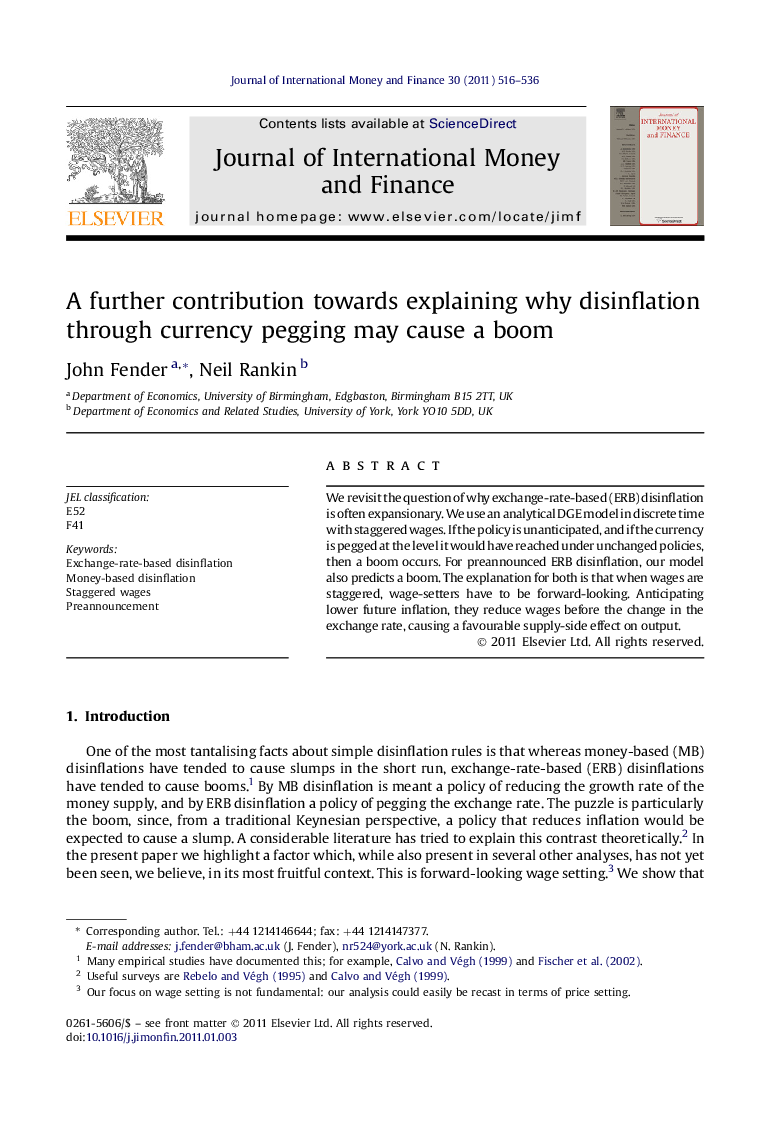| Article ID | Journal | Published Year | Pages | File Type |
|---|---|---|---|---|
| 963614 | Journal of International Money and Finance | 2011 | 21 Pages |
Abstract
We revisit the question of why exchange-rate-based (ERB) disinflation is often expansionary. We use an analytical DGE model in discrete time with staggered wages. If the policy is unanticipated, and if the currency is pegged at the level it would have reached under unchanged policies, then a boom occurs. For preannounced ERB disinflation, our model also predicts a boom. The explanation for both is that when wages are staggered, wage-setters have to be forward-looking. Anticipating lower future inflation, they reduce wages before the change in the exchange rate, causing a favourable supply-side effect on output.
Keywords
Related Topics
Social Sciences and Humanities
Economics, Econometrics and Finance
Economics and Econometrics
Authors
John Fender, Neil Rankin,
